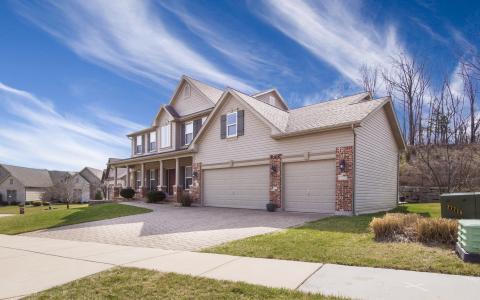
(Investopedia) - Mortgage rates, which surged to two-decade highs last week, have hurt housing affordability so much that a jump to 8% wouldn’t make things significantly worse, according to a Zillow economist.
KEY TAKEAWAYS
- If mortgage rates hit 8%, for a median-priced home with a 10% downpayment, a household would need at least $7,000 more in income to be able to afford monthly payments.
- Higher rates and fewer homes for sale have made buying a home more difficult.
- Fed has raised rates to combat inflation driving mortgage rates higher.
- Current homeowners are reluctant to sell homes as they feel locked-in by prior low interest rate mortgages, reducing home inventory.
- Fed's lack of clarity on direction for interest rates has added at least $245 a month on a typical $300,000 mortgage, according to real estate trade groups.
Should the average 30-year mortgage rate rise to 8% from its current level of 7.49%, a household would need an income of $114,000 to afford the monthly mortgage payment on a median-priced home, given a 10% down payment, up from $107,000 at the current rate, Nicole Bachaud, senior economist at Zillow, calculated in an analysis released Tuesday.1
“While the idea of an 8% mortgage rate is daunting and more buyers will be priced out at each new milestone, buyers are already in a tight spot and the housing market isn’t likely to look markedly different with rates above 8%,” Bachaud wrote.
Mortgage rates have been pushed up by the Federal Reserve’s campaign of anti-inflation interest rate hikes since March 2022. Last week, the average rate rose to its highest since December 2000, according to Freddie Mac, and uncertainty about the possibility of more Fed rate hikes means that more increases are possible.
Home affordability has plunged by many measures, making homebuying a pipe dream for typical wage earners across most of the country. So it’s little wonder that 84% of U.S. adults polled by mortgage giant Fannie Mae in September said it was a bad time to buy a home, a record high since the survey began in 2010.2
Today’s rates aren’t high by historical standards. Since Freddie Mac began keeping track in 1971, the average 30-year mortgage rate has been 7.74%. However, the recent surge in mortgage rates follows years of sub-4% rates that hit a record low of 2.65% in 2021.3 That has made many homeowners reluctant to sell and give up their locked-in low rates, keeping listings sparse. The low inventory has kept prices from falling.
Plunging affordability and low inventory have dragged the real estate industry into the doldrums. Fewer people applied for mortgages last week than at any time since 1996, according to the Mortgage Bankers Association (MBA).4
The downturn prompted three real estate industry trade groups—the MBA, the National Association of Realtors, and the National Association of Home Builders—to write an open letter to officials at the Federal Reserve Tuesday pleading with them to commit to stop raising interest rates.
The Fed has hiked its influential fed funds rate 11 times from near-zero during the pandemic to a range of 5.25% to 5.50%. That’s pushed up interest rates on all kinds of loans that are influenced by the fed funds rate, including credit cards, car loans, and mortgages. The Fed’s goal is to discourage borrowing and spending, slow the economy, and allow supply and demand to rebalance, hopefully subduing today’s overheated inflation rate.
To make things especially difficult on the housing market, uncertainty about future Fed rate hikes has pushed mortgage rates higher than they normally would be, the trade groups wrote.
Mortgage rates are typically closely tied to yields on 10-year Treasurys. In recent months, however, mortgage rates have soared 1.2 percentage points higher than they typically would be based on 10-year treasury yields alone, which the trade groups attributed to the Fed’s lack of clarity about whether it’s going to raise the Fed funds rate again.5 That equates to $245 a month on a typical $300,000 mortgage, the groups calculated.
By Diccon Hyatt



